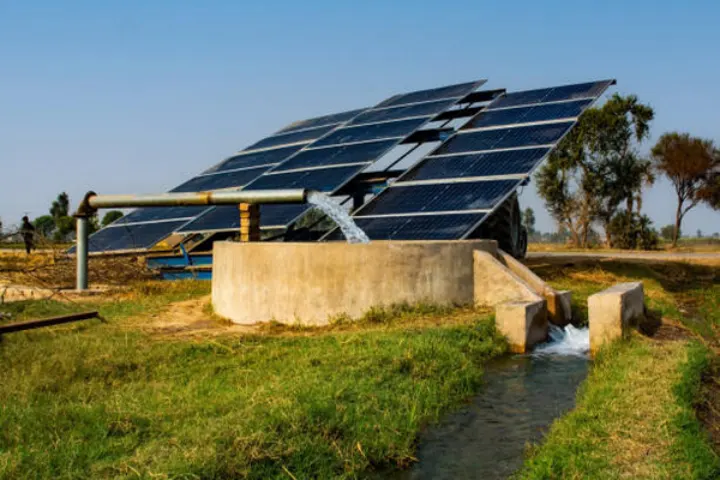

Representative Image
India overtook Japan to become the world’s third-largest solar power generator in 2023, according to a report by global energy think tank Ember. India has climbed from ranking ninth in 2015.
The Global Electricity Review 2024 published on Wednedsay provides a comprehensive overview of the global power system in 2023 based on country-level data.
It was published alongside the world’s first open dataset on electricity generation in 2023 covering 80 countries representing 92 percent of global electricity demand, as well as historic data for 215 countries.
“India’s growth in solar generation in 2023 pushed the country past Japan to become the world’s third-largest solar power generator. It has climbed from ranking ninth in 2015,” the report said.
The report finds that solar produced a record 5.5 per cent of global electricity in 2023. In line with the global trend, India generated 5.8 per cent of its electricity from solar in 2023.
India saw the world’s fourth-largest increase in solar generation in 2023 (+18 Terawatt hours or TWh), behind China (+156 TWh), the United States (+33 TWh) and Brazil (+22 TWh). Together the top four solar growth countries accounted for 75 percent of growth in 2023.
“A renewables-powered future is now becoming a reality. Solar power, in particular, is growing at an unprecedented pace”, said Aditya Lolla, Ember’s Asia Programme Director.
Solar maintained its status as the world’s fastest-growing electricity source for the nineteenth consecutive year, adding more than twice as much new electricity worldwide as coal in 2023.
Solar has been rapidly accelerating in recent years. Global solar generation in 2023 was more than six times larger than in 2015, while in India it was 17 times higher. India’s share of solar generation increased from 0.5 per cent of India’s electricity in 2015 to 5.8 per cent in 2023.
Pathways to decarbonizing electricity show that solar will play a central role in the future energy system.
According to the IEA Net Zero Emissions scenario, solar would increase to 22 percent of global electricity generation in 2030. The goal to triple global renewables capacity by 2030 agreed at COP28 has the potential to put the world on this course.
India is one of the few countries planning to triple renewable capacity by 2030. According to Ember’s analysis, annual capacity additions need to significantly increase for India to meet this capacity target.
“Increasing clean electricity isn’t just for reducing carbon emissions in the power sector. It’s also needed to meet the rising electricity demand in an increasingly electrified economy and decoupling economic growth from emissions, which is crucial for tackling climate change”, Aditya Lolla concluded.
The Government of Myanmar has expressed deep gratitude for India's swift and substantial support in…
Protesters affected by the Diamer-Bhasha Dam project offered Eid-ul-Fitr prayers at their ongoing protest camp…
External Affairs Minister S. Jaishankar recognised the screening of 'The Diplomat' in Israel for a…
By Rajnish Singh Operation Brahma by India is operating at full tilt aimed towards providing…
Indian Naval Ship (INS) Tarkash successfully intercepted and seized over 2500 kg of narcotics in…
The Rajasthan Samagra Kalyan Sansthan (RSKS India) made a significant impact during the 58th session…